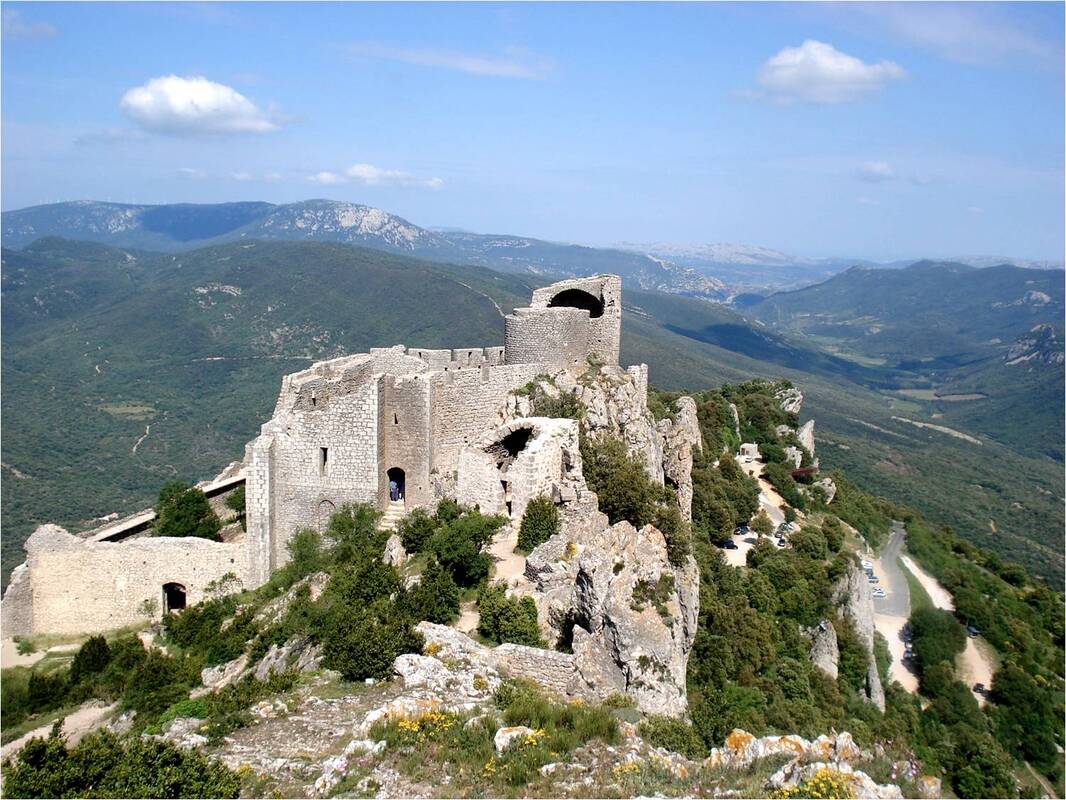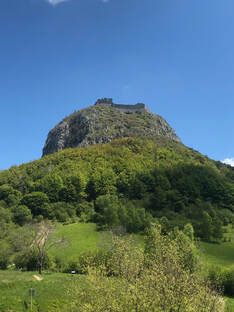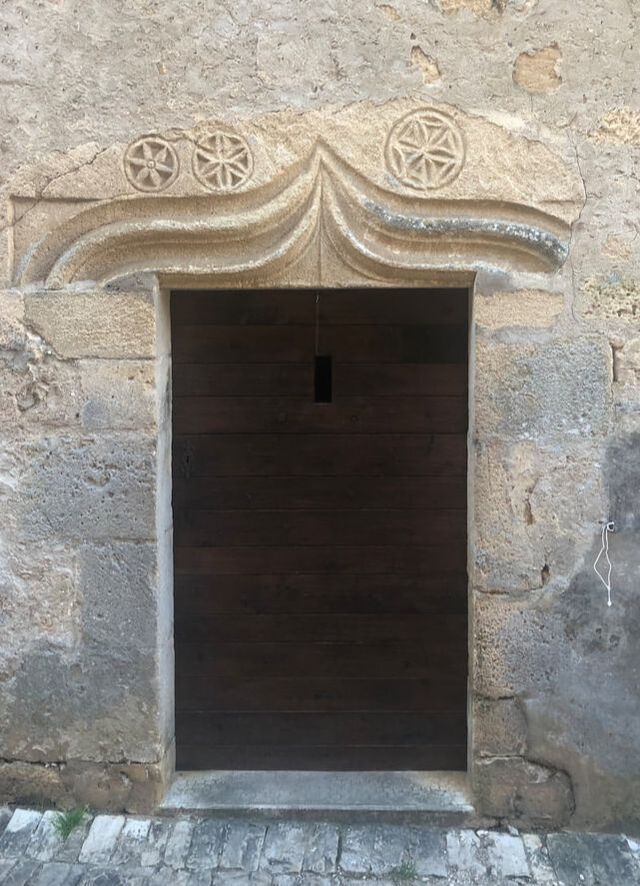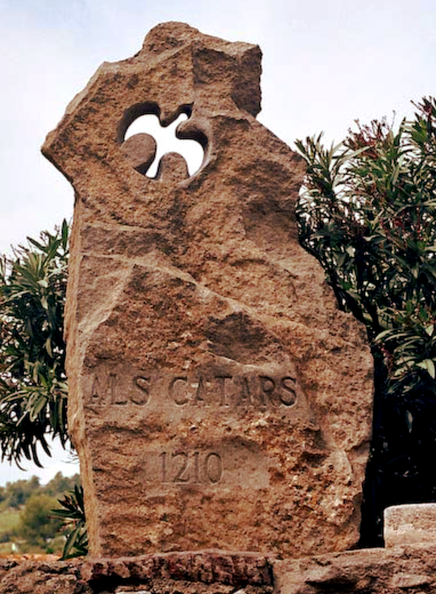The Albigensian Crusade, Esclarmonde of Foix and Montsegur
d
Legend claims that after Jesus’ crucifixion, Mary Magdalene journeyed to the south of France in a rudderless boat, landing at Saintes Maries de La Mer, where she preached and converted Gaul to Christianity. The form of Christianity that she is alleged to have taught is thought by some scholars to be more Gnostic , Pythagorean, or Neo-Platonic than the church which coalesced in Rome with the merging of Imperial power, the pagan Sol Invictus cult (which worshipped a sun God born on December 25) and the teachings of Saints Peter and Paul. The Church of Southern France (Occitania) differed from the Church of Rome in several significant ways:
1. It was a church of equality. Both men and women were preachers and administrators of sacraments.
2. It was a church of simplicity. Preachers held jobs as well as spiritual authority. Most travelled the country teaching while they supported themselves as weavers. Communities would gather in homes or in nature; there were no ecclesiastical buildings, vestments or relics, nor any tithe. The riches of the world were seen as a distraction and a snare, and hence, leaders were dedicated to lives of poverty.
3. It was a religion that was personal and symbolic. Like the Occitan language itself, the Christianity which flourished in the Languedoc was poetic rather than literal. Salvation came from wisdom, which was to be found in contemplation and meditation on the words of the Gospel of John and through the devotion to the practices of an ascetic life: fasting and prayer.
4. It was a religion of non-violence. War and oaths of fealty to a lord were forbidden. The crucifix was viewed as a symbol of torture, and never venerated. Instead, the symbols of the Cathars were light and the dove of peace.
5. It was a religion of universal salvation. The soul was seen as a Divine Spark which underwent a process of purification on earth through a series of reincarnations until it was reunited with the Divine Source. Hell was thought to exist only on earth; eventually all humans would be saved.
While some elements of the Cathar religion might strike us as peculiar (the creation of matter by a Demiurge, for example), other beliefs have become quite common in the 21st century, such as vegetarianism, pacifism, euthanasia, and reincarnation. Many tenets of Cathar faith that were condemned as heretical and punished by death have been adopted by most Protestant churches: gender equality , the use of contraception , holding communion as the symbolic (but not literal) transformation into the blood and body of Jesus, the adoption of the notion of universal salvation, and the denial of indulgences and purgatory. Some beliefs are now even seen as Orthodox by the Catholic church itself , such as condemnation of capital punishment, refusal of clergy to serve in war, and reading and preaching scripture in the vernacular language of the congregation.
The followers of this faith in Occitania (that region in France which we now know as Aquitaine, the Dordogne, the Languedoc and Provence) called themselves simply “Good Christians”. They were dubbed by others as “Cathars” or “Cathari”, from the Greek word which means ‘pure” (and from which we get our word “ catharsis”). Even Bernard of Clairvaux, who saw the Cathars as a threat to the Catholic church and advocated their destruction wrote of them :
... if you question the heretic about his faith, nothing is more Christian; if about his daily converse, nothing more blameless; and what he says he proves by his actions ... As regards his life and conduct, he cheats no one, pushes ahead of no one, does violence to no one. Moreover, his cheeks are pale with fasting; he does not eat the bread of idleness; he labours with his hands and thus makes his living ...
It is a long and complex story how the greed of French kings and Roman popes conspired with fanatical and dogmatic personalities and the crushing humiliation of the knights of theThird Crusade to create what has become known as the Albigensian Crusade (named after the nearby city of Albi) and the Medieval Inquisition which it spawned. It began on July 22, 1209 in the town of Beziers, a thriving artistic and mystical center, renowned for its international community of Jewish, Cathar and Catholic scholars working together in an atmosphere of mutual respect. It was a town dedicated to Mary Magdalene, to whom the Cathars traced their spiritual lineage. Papal dispensation and the spoils of war were offered to troops for attacking the region, and an enormous army amassed . Surrounding the city, they demanded the delivery of all Cathars. The city refused. The presiding leader of this first attack was the abbot of Citeaux, who later was named the Archbishop of Narbonne. He ordered the extermination of the entire town, which had taken sanctuary in the church of Mary Magdalene. When soldiers protested that there were Catholics as well as Cathars in the church, the abbot famously replied , “Kill them all. God will know his own”. 20,000 men, women and children were burned alive and slaughtered by sword. Thus began one of the most savage and brutal campaigns of all time, of which Will Durant has written in his Age of Faith :
"Compared with the persecution of heresy in Europe from 1209 to
1492, the persecution of Christians by Romans in the first three centuries AD was a mild and humane procedure. Making every allowance required of an historian and permitted to a Christian, we must rank the Inquisition, along with the wars and persecution of our time as among the darkest blots on the record of mankind, revealing a ferocity unknown in any beast”
It was not a fair fight. It never is when one side is dedicated to pacifism and non-violence and the other has a vast army of warriors who believe they will be granted both worldly riches and heavenly salvation for murder. By 1242 when the last of the Cathar communities was burned alive at Montsegur, the rich and fertile land of Occitania lay in utter waste. This land of troubadours and poets, a culture which revered the art of courtly love and which granted astonishing equality to women, a land of extraordinary mysticism where the Kabbalah had so recently been developed- all was completely destroyed. Surviving Occitan artists, musicians and scholars were scattered to the protective courts of King Alfonso in Spain and the courts of the Minnesingers in Germany. Numbers are difficult to know for certain, but most often, the murdered are counted in millions. It was, as some historians note, the first genocide in Europe.
Today, as you drive through these beautiful lands, you can still see the remnants of these atrocities. Roadside markers with the Occitan emblem denote places of particularly large scale violence and death. “Rue des Martyrs” and “Rue de la Massacre” are not uncommon names for streets. Signs of “You are entering Cathar country” punctuate the roads which lead from the gaudy and extravagant papal palace at Avignon to the rugged, sun kissed mountains that were the last refuge of the Cathars.
There are very recently signs of acknowledgment of these atrocities by the Catholic church. In a gesture of reconciliation, in October of 2016 the Bishop of Pamiers organizes a pilgrimage to Montsegur in which wreaths were laid at the site of the massacre and Occitanian singers offered music passed down from the Cathars.
Read about the event here in this article in Church Times and in this one by Cathar historian James McDonald
May it be the first of many acts of atonement and acknowledgment to follow.
As guides to creating rituals that transform trauma , I heartily encourage you to seek out the works of Francis Weller (especially his book The Wild Edge of Sorrow) and Thomas Huebl.
Legend claims that after Jesus’ crucifixion, Mary Magdalene journeyed to the south of France in a rudderless boat, landing at Saintes Maries de La Mer, where she preached and converted Gaul to Christianity. The form of Christianity that she is alleged to have taught is thought by some scholars to be more Gnostic , Pythagorean, or Neo-Platonic than the church which coalesced in Rome with the merging of Imperial power, the pagan Sol Invictus cult (which worshipped a sun God born on December 25) and the teachings of Saints Peter and Paul. The Church of Southern France (Occitania) differed from the Church of Rome in several significant ways:
1. It was a church of equality. Both men and women were preachers and administrators of sacraments.
2. It was a church of simplicity. Preachers held jobs as well as spiritual authority. Most travelled the country teaching while they supported themselves as weavers. Communities would gather in homes or in nature; there were no ecclesiastical buildings, vestments or relics, nor any tithe. The riches of the world were seen as a distraction and a snare, and hence, leaders were dedicated to lives of poverty.
3. It was a religion that was personal and symbolic. Like the Occitan language itself, the Christianity which flourished in the Languedoc was poetic rather than literal. Salvation came from wisdom, which was to be found in contemplation and meditation on the words of the Gospel of John and through the devotion to the practices of an ascetic life: fasting and prayer.
4. It was a religion of non-violence. War and oaths of fealty to a lord were forbidden. The crucifix was viewed as a symbol of torture, and never venerated. Instead, the symbols of the Cathars were light and the dove of peace.
5. It was a religion of universal salvation. The soul was seen as a Divine Spark which underwent a process of purification on earth through a series of reincarnations until it was reunited with the Divine Source. Hell was thought to exist only on earth; eventually all humans would be saved.
While some elements of the Cathar religion might strike us as peculiar (the creation of matter by a Demiurge, for example), other beliefs have become quite common in the 21st century, such as vegetarianism, pacifism, euthanasia, and reincarnation. Many tenets of Cathar faith that were condemned as heretical and punished by death have been adopted by most Protestant churches: gender equality , the use of contraception , holding communion as the symbolic (but not literal) transformation into the blood and body of Jesus, the adoption of the notion of universal salvation, and the denial of indulgences and purgatory. Some beliefs are now even seen as Orthodox by the Catholic church itself , such as condemnation of capital punishment, refusal of clergy to serve in war, and reading and preaching scripture in the vernacular language of the congregation.
The followers of this faith in Occitania (that region in France which we now know as Aquitaine, the Dordogne, the Languedoc and Provence) called themselves simply “Good Christians”. They were dubbed by others as “Cathars” or “Cathari”, from the Greek word which means ‘pure” (and from which we get our word “ catharsis”). Even Bernard of Clairvaux, who saw the Cathars as a threat to the Catholic church and advocated their destruction wrote of them :
... if you question the heretic about his faith, nothing is more Christian; if about his daily converse, nothing more blameless; and what he says he proves by his actions ... As regards his life and conduct, he cheats no one, pushes ahead of no one, does violence to no one. Moreover, his cheeks are pale with fasting; he does not eat the bread of idleness; he labours with his hands and thus makes his living ...
It is a long and complex story how the greed of French kings and Roman popes conspired with fanatical and dogmatic personalities and the crushing humiliation of the knights of theThird Crusade to create what has become known as the Albigensian Crusade (named after the nearby city of Albi) and the Medieval Inquisition which it spawned. It began on July 22, 1209 in the town of Beziers, a thriving artistic and mystical center, renowned for its international community of Jewish, Cathar and Catholic scholars working together in an atmosphere of mutual respect. It was a town dedicated to Mary Magdalene, to whom the Cathars traced their spiritual lineage. Papal dispensation and the spoils of war were offered to troops for attacking the region, and an enormous army amassed . Surrounding the city, they demanded the delivery of all Cathars. The city refused. The presiding leader of this first attack was the abbot of Citeaux, who later was named the Archbishop of Narbonne. He ordered the extermination of the entire town, which had taken sanctuary in the church of Mary Magdalene. When soldiers protested that there were Catholics as well as Cathars in the church, the abbot famously replied , “Kill them all. God will know his own”. 20,000 men, women and children were burned alive and slaughtered by sword. Thus began one of the most savage and brutal campaigns of all time, of which Will Durant has written in his Age of Faith :
"Compared with the persecution of heresy in Europe from 1209 to
1492, the persecution of Christians by Romans in the first three centuries AD was a mild and humane procedure. Making every allowance required of an historian and permitted to a Christian, we must rank the Inquisition, along with the wars and persecution of our time as among the darkest blots on the record of mankind, revealing a ferocity unknown in any beast”
It was not a fair fight. It never is when one side is dedicated to pacifism and non-violence and the other has a vast army of warriors who believe they will be granted both worldly riches and heavenly salvation for murder. By 1242 when the last of the Cathar communities was burned alive at Montsegur, the rich and fertile land of Occitania lay in utter waste. This land of troubadours and poets, a culture which revered the art of courtly love and which granted astonishing equality to women, a land of extraordinary mysticism where the Kabbalah had so recently been developed- all was completely destroyed. Surviving Occitan artists, musicians and scholars were scattered to the protective courts of King Alfonso in Spain and the courts of the Minnesingers in Germany. Numbers are difficult to know for certain, but most often, the murdered are counted in millions. It was, as some historians note, the first genocide in Europe.
Today, as you drive through these beautiful lands, you can still see the remnants of these atrocities. Roadside markers with the Occitan emblem denote places of particularly large scale violence and death. “Rue des Martyrs” and “Rue de la Massacre” are not uncommon names for streets. Signs of “You are entering Cathar country” punctuate the roads which lead from the gaudy and extravagant papal palace at Avignon to the rugged, sun kissed mountains that were the last refuge of the Cathars.
There are very recently signs of acknowledgment of these atrocities by the Catholic church. In a gesture of reconciliation, in October of 2016 the Bishop of Pamiers organizes a pilgrimage to Montsegur in which wreaths were laid at the site of the massacre and Occitanian singers offered music passed down from the Cathars.
Read about the event here in this article in Church Times and in this one by Cathar historian James McDonald
May it be the first of many acts of atonement and acknowledgment to follow.
As guides to creating rituals that transform trauma , I heartily encourage you to seek out the works of Francis Weller (especially his book The Wild Edge of Sorrow) and Thomas Huebl.
Below are the castles of Foix and Montsegur, owned by Esclarmonde - one of the greatest heroines of the age . A beautiful and educated aristocratic woman who had born six children, upon her widowhood she renounced her wealth to adopt the simple life of a spiritual Parfait or leader. It was the learned Esclarmonde who was chosen to debate the side of the Cathars against the Church of Rome at the Council of Pamier- her opponent was Dominic de Guzman (founder of the Dominican Order).
Read the Laconneau essay about her here.
Read Anne Baring's essay about Esclarmonde and the Cathars here
"Sub Rosa": Safe houses for heretics like this one in Beynac were marked with the sign of the rose
Timeline of Heresy
1203 : Dominic de Guzman sent on preaching mission to Cathar territory
1207 : Esclarmonde of Foix debates at the Council of Pamiers
July 22, 1209 : Attack at Beziers, France; up to 20,000 put to the sword by the combined forces of the Pope(Not-So) Innocent III, the Cistercians and King Philip Augustus of France. The beginning of the Albigensian Crusade.
Beziers was a town where Catholic Orthodox, Jews and Cathars all lived peaceably side by side. When the besieged town refused to hand over the Cathars, attacking soldiers asked how to distinguish between them.the The commandeer in chief, Cistercian Abbot Armaury, infoamousluy replied, "Kill them all. God will sort his own" .
July 22, 1210: Burning of 140 Cathars in Minerve - commemorated by this sculpture of a dove (Below)
1216: Dominican Order of Preachers established to combat Cathars
1231 : Medieval Inquisition established by Dominicans, with torture considered acceptable
1244 : Fall of Montsegur; flight of Cathars and troubadours to Spain and Germany where they take refuge. Many Cathar men hide in Franciscan monasteries, while the surviving women parfaits take refuge in Benedictine orders. The Flower of Life becomes a symbol of secret sanctuary," sub rosa”, under the rose
1296 Spiritual Franciscans declared heretical by Pope Boniface VIII. Watch the film or read the novel In the Name of the Rose written by philosopher and Medieval historian Umberto Eco for a fictional but well-informed and gripping account of the battles around this issue.
1310 Marguerite Porete burned at stake for Mirror of the Simple Soul
1311 Beguines declared heretical by Pope Clement V
1314 On Friday the 13th, the Knights Templar and grand master Jacques de Molay are rounded up and burned by order of Philip IV
1318 Spiritual Franciscans begin to be burned by Pope John XXII
1319 Beguines begin to be sent to the stake
1326-1329 Meister Eckart brought before Inquisition. He is declared a heretic after his death.
1480 Spanish Inquisition established by Ferdinand and Isabella in Spain. Eating pork becomes grounds for arrest and trial before the Inquisitors ( see the film Goya's Ghosts for a heart rending depiction of how this continued even into the 18th century in Spain) To read about Laconneau, a community that traces its roots to the Cathars, read here
For further history of the Cathars, including a timeline and source documents from the Inquisition, click here
1231 : Medieval Inquisition established by Dominicans, with torture considered acceptable
1244 : Fall of Montsegur; flight of Cathars and troubadours to Spain and Germany where they take refuge. Many Cathar men hide in Franciscan monasteries, while the surviving women parfaits take refuge in Benedictine orders. The Flower of Life becomes a symbol of secret sanctuary," sub rosa”, under the rose
1296 Spiritual Franciscans declared heretical by Pope Boniface VIII. Watch the film or read the novel In the Name of the Rose written by philosopher and Medieval historian Umberto Eco for a fictional but well-informed and gripping account of the battles around this issue.
1310 Marguerite Porete burned at stake for Mirror of the Simple Soul
1311 Beguines declared heretical by Pope Clement V
1314 On Friday the 13th, the Knights Templar and grand master Jacques de Molay are rounded up and burned by order of Philip IV
1318 Spiritual Franciscans begin to be burned by Pope John XXII
1319 Beguines begin to be sent to the stake
1326-1329 Meister Eckart brought before Inquisition. He is declared a heretic after his death.
1480 Spanish Inquisition established by Ferdinand and Isabella in Spain. Eating pork becomes grounds for arrest and trial before the Inquisitors ( see the film Goya's Ghosts for a heart rending depiction of how this continued even into the 18th century in Spain) To read about Laconneau, a community that traces its roots to the Cathars, read here
For further history of the Cathars, including a timeline and source documents from the Inquisition, click here
Forgiveness Practice:
I am sorry.
Forgive me.
Thank you.
I love you.
-Ho’oponopono Meditation
Contact Kayleen Asbo: [email protected]



